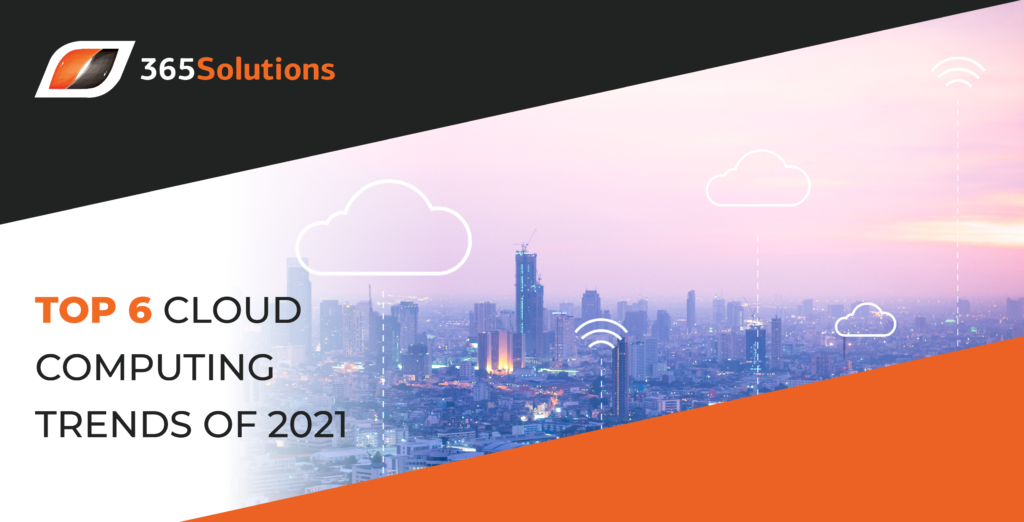Introduction
Technology is growing by leaps and bounds and redefining our personal and professional lives with each passing day. The one technology which proliferated beyond limits in the last year is undoubtedly cloud computing. Post-March 2020, cloud technology has emerged as the lifeline of the global economy, saving corporations, higher education, healthcare, and small and medium scale businesses from stagnating.
In this year and the coming years, cloud computing will exhibit up and coming technological marvels, and we can’t wait to see how! Let’s take a deep breath and explore the top clouds computing in 2021.
Top 6 Cloud Computing Trends of 2021
In 2020, the net worth of the cloud computing market was $371.4 billion. With a CAGR of 17.5%, the market is estimated to grow up to $832.1 billion by 2025. In addition, around 34 per cent of professionals say they prefer working on the cloud better than working in the office and will look for a job change if made to return to the office.
The convenience of working from anywhere at the most productive hours of the day is the biggest lure for workers. However, for organisations, enhanced productivity and cost effectiveness make cloud operations a hit.
Here’s what’s in store for us with the evolving cloud technology in 2021:
Multi-cloud Approaches
In recent times organisations have realised that cloud migration is not a choice but the need of the hour. With this, another realisation has dawned on them that not all clouds cater to all of their business needs. As a result, 93% of the organisations are adopting a multi-cloud strategy. It allows companies to avail themselves of different cloud services from various providers.
In future, this trend will gain traction and eliminate barriers between different solutions providers. The providers will seek to strike strategic partnerships combining their strengths to create multi-cloud packages. Microsoft and Oracle already have linked their clouds allowing users to run enterprise applications across Microsoft Azure and Oracle Cloud.
For the user, it is a highly flexible, customisable and cost-effective move. Also by distributing your cloud services to different solutions providers reduces dependence on one vendor. In addition, this minimises the risk of complete halting of operations in case of an outage.
Artificial Intelligence
You can rely on AI-enabled cloud services throughout 2021 to adapt to your business needs. Cloud services with AI capabilities like recognition tools, Natural Language Processing (NLP) and recommendation engines will continue to be more widely deployed by organisations. AI algorithms through cloud computing will play a significant role in automated vehicles, pandemic response planning and smart city infrastructure.
Serverless Computing
Serverless computing is highly beneficial for developers who no longer have to manage network servers as the cloud solutions provider manages all resources. Developers can be more productive on the serverless interface. They can now focus solely on development, UX and UI instead of IT infrastructure. The market is expected to grow with a robust CAGR of 23.17% between 2021-26.
Virtual Desktops
Virtual desktops are yet another important innovation that will redefine office work. It shifts your entire workstation to your laptop or PC as a managed cloud service. This helps cover security concerns and allows devices to be managed centrally. The virtual desktop saves the expenses on maintaining updated hardware; the system auto-updates and keeps the entire workforce on the same page. In addition, the organisations can benefit from the pay per hour of use subscription plans by deploying virtual desktops.
This model of virtual operations has been offered by Microsoft with the Windows Virtual Desktop and by Amazon’s Workspace platform.
Hybrid and on-prem Cloud services
While public clouds are efficient and cost-effective, they pose many security and compliance issues to the users. Hence, organisations are fast adopting a hybrid cloud environment, a mix of public and private cloud services. It brings the benefits of using the public cloud with the security of a private cloud environment. For example, the employees can access non-sensitive company data through the public cloud, while the sensitive data stays secure and protected on the private cloud.
82% of the enterprises have adopted the hybrid cloud strategy, and we are still counting!
Kubernetes and Containerisation
Organisations are fast moving towards adopting Kubernetes and containerisation. However, having one or multiple clouds is not enough. Instead, dividing those clouds into smaller containers helps organisations to develop microservices and applications that need different storage, configuration and security features. It is believed that businesses adopting Kubernetes in the future will have an edge in the competition. That’s why companies like Microsoft and NetApp purchased Deis and StackPointCloud to expand their Kubernetes toolsets.
Conclusion
To keep your business future-ready, get in touch with 3656Solutions. We offer a plethora of cloud-based products and services at the best pricing. Visit our website or contact us at +44 20 3880 1220 or write to us at sales@365solutions.com.
Also Read






